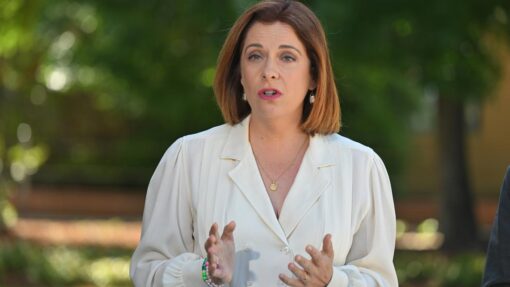Pay penalties to be saved as workers score wage win
Andrew Brown and William Ton |

Workers on the minimum wage will get more money in a matter of days, as the employment minister pledges to enshrine workplace conditions.
From the start of the financial year on Tuesday, workers on the minimum wage will get a 3.5 per cent pay lift, which will mean they take home $24.95 per hour, or $948 per week.
The 3.5 per cent rise will also apply to award wages.

The increase, which came in above inflation, would help workers keep up with the cost of living, Employment Minister Amanda Rishworth said.
“For someone on ordinary hours on the minimum wage, that will be an extra $1700. This is ensuring that these workers get the pay that they deserve,” she told reporters in Adelaide on Sunday.
“We made it very clear that we thought that these workers deserved a real wage increase, particularly to ensure that they don’t fall behind, but they can also actually get ahead.”
Changes from Tuesday mean the amount of superannuation paid into workers’ accounts will increase from 11.5 per cent to 12 per cent and be expanded to include parents taking leave to care for their newborns.
A mother-of-two’s retirement savings will get a boost of about $14,800, with about 200,000 mums benefiting from the change annually.

Parents will gain an additional 10 days, totalling 120 days, of parental leave for babies born after Tuesday.
Ms Rishworth said the rise in the minimum wage would complement upcoming laws to federal parliament that would protect penalty rates for workers.
But she did not say whether the Albanese government would legislate working from home in the upcoming parliamentary term.
“We plan to legislate penalty rates in awards to protect them from being eroded,” she said.
“Our focus is legislating on what we took to the election. Any other ideas … we will consider that in the normal course of events.”
For 2.4 million people on social security payments, the new financial year brings a 2.4 per cent increase to some payments because of indexation.

Families on the Family Tax Benefit Part A, will receive $227.36 a fortnight for children aged under 13 and $295.82 for children aged 13 or over.
Those on Family Tax Benefit Part B have their payments increase to $193.34 and those with a youngest child aged five or over, the rate will increase to $134.96 a fortnight.
While aged pension rates aren’t increasing, the threshold for the income and assets a pensioner must earn under to receive a full pension will lift by 2.4 per cent.
Four new Medicare items will support longer consultation times and higher rebates for specialised gynaecological care from Tuesday.
They apply to initial and follow-up consultations which last a minimum of 45 minutes, either in person or via video, while new menopause and perimenopause health assessments will also be made available.

Energy bill support will continue from the government, bringing down pressure on households and small businesses with a $150 rebate automatically applied to bills in two quarterly instalments.
But some households could be in for a power bill shock as new benchmark prices take effect, with NSW customers on standing offers facing increases of between 8.3 per cent to 9.7 per cent.
Southeast Queensland customers on default plans can expect hikes of between 0.5 per cent and 3.7 per cent, while people in South Australia face rises of 2.3 per cent to 3.2 per cent.
Victorian households can expect an average one per cent bump, with some distribution zones actually set for small price drops.
AAP


